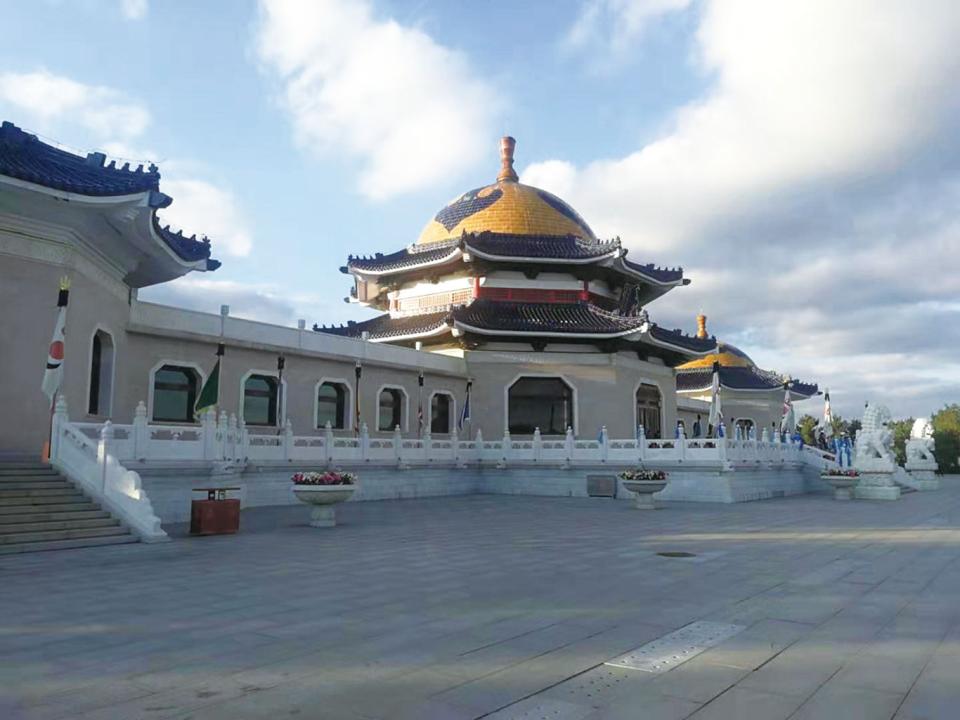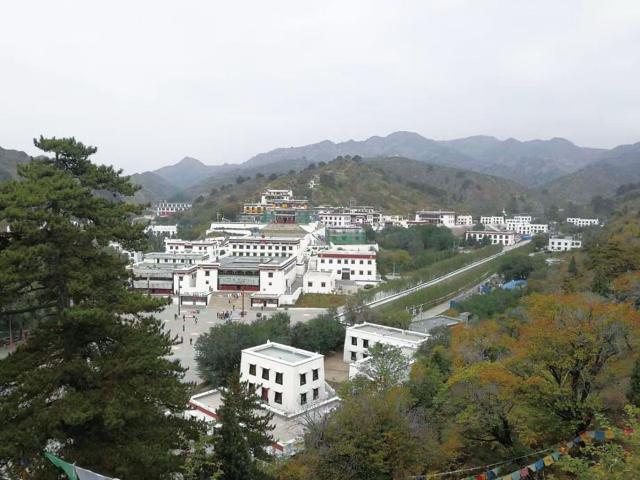I’ve ventured into Inner Mongolia a few times now, sometimes only peeking in over the border, and other times getting deep into the steppe where the only roads left are those trampled by herds of camels and sheep. While the wilderness of the Inner Mongolia Autonomous Region is certainly a fascinating feature for those trying to escape a big city rush, towns in the province are no less attractive. The distance and remoteness can be felt even in the largest cities, where the generous spaces between structures seem to be mimicking the province itself.
Inner Mongolian cities also never disappoint with the food choices on offer. While outside stalls and markets can be scarce during the cold months, shopping malls and restaurants certainly fill the gap. Meat eaters might find it easier to get around since mutton and lamb seem to be eaten for all three daily meals and dried beef generously sprinkled with spices is everyone’s favorite snack. As a vegetarian, I indulge in thick and slightly sweet yogurt and other dairy products. One thing not to miss is venturing out to encounter herders. Sheep, horse, and goat herds often roam around the smaller roads and draw a strong contrast with the industry-heavy Inner Mongolian cities. “Do you think the lifestyle has changed a lot since you were little?” I asked one elderly woman wearing a headscarf who was taking care of cows. “What are you talking about, what change! I was herding cows when I was little and I do so now, no change,” was her reply.
Baotou is the largest city in Inner Mongolia in terms of urban population and industry. As I found later, many cities in the province boast unusual and difficult to navigate setup of an old and new town. As is customary for the old town, the spirit and daily chaos are present, while the new town boasts tidy traditional-architecture influenced blocks with less traffic, often to the point where you do start questioning how many people actually live there. The city itself serves as a good stop to feast on Mongolian hotpot (powered by mutton and lamb of course), stock up on the local alcohol – made from fermented horse milk, and other dairy products. When you come upon a dairy stand, keep an eye out for little flower blossom-looking milk candy that is kept in the freezer together with milk tofu. The chewy fresh milk candy is much better than the usual variety you find packed but also will need to be kept in low temperatures, which is rarely a problem a if you are traveling outside the summer season.
Baotou is mostly a stopover for those traveling to Wudangzhao, or Badekar Lamasery. Every old city or tourist spot in Inner Mongolia will usually carry two names – one of the Mongolian origin, and one in Chinese. It can sometimes prove tricky to figure out if you and the locals are talking about the same place.
Wudangzhao Tibetan lamasery is the largest in China outside of the Tibet Autonomous Region, and will easily take up half a day. I usually struggle with tourist destinations of national importance, simply for the sheer number of people who flood the sites every day. However, Wudangzhao is more than spacious, but be prepared to be surrounded by many small groups with guides spilling the well-memorized text into your ears. The lamasery attracts both religious and regular tourism, so many visitors will be slightly oblivious to what the rules at the monastery are, but as long as you know to walk clockwise inside the temple buildings and around white stupas, as well as step over the doorstep, you should be fine.
Wudangzhao is a pleasant walk in the hilly surroundings (get into a pair of comfortable shoes) in late spring or early autumn, where trees dotting the mountains start turning yellow and contrast with the white-blue color scheme of the monastery.
The true location of Genghis Khan’s resting place might forever remain one of the largest Indiana Jones-worthy secrets, but that doesn’t stop every kind of place from claiming a relationship. When Genghis Khan rode past Ordos, an area now to the south of the city of Baotou, he allegedly said that the grass and water were rich and that he wished to be buried there after his death. As of today, the placement of Genghis’ actual tomb is widely disputed. The mausoleum at Ordos serves as a temple both for Mongolian shamanism as well as Genghis Khan himself. The grand walkway that greets visitors with a huge sculpture of the Khan on the horse is a great indication of how the construction of the mausoleum had to be: “make it majestic.” Besides the main building, where visitors can see reconstructions of Mongolian burial traditions, a number of Genghis statues, and illustrated timeline of the great Khan’s life, the mausoleum grounds boast a shamanist altar, with a disclaimer that women traditionally would not be allowed to go up the altar, but you can do so now. In short, if you anger the ancient spirits, you have been warned.
Ordos has also long been famous as a “ghost” city. While watching videos filmed in Ordos might make an impression of a truly empty and eerie place, it is not exactly so. Or at least not anymore. The new district, Kangbashi, that lies a good 20-minute drive from the rest of the city has been titled “the largest ghost city in the world.” However, the latest reports from 2017 already admit that Kangbashi is becoming increasingly more inhabited. You still drive past many empty European-inspired condos with flashy names (Golden Shore being probably the most prominent) but the neighborhood stores seem open and colors are returning to the district. That being said, Ordos is still an incredibly fascinating city because even when it is not empty anymore, it still feels so. The streets are parade-wide and the distance between buildings seems at least 1.5 times larger than standard. Even the central shopping malls fall quiet above the second floor, although locals tried to convince me there was a great restaurant up top. Regardless of how empty or busy Ordos is, take time to hire a car or a bicycle and drive around the city of new developments and majestic squares (“Grassland Appreciation Square” is just one of the fantastic names).

 Old Version
Old Version
